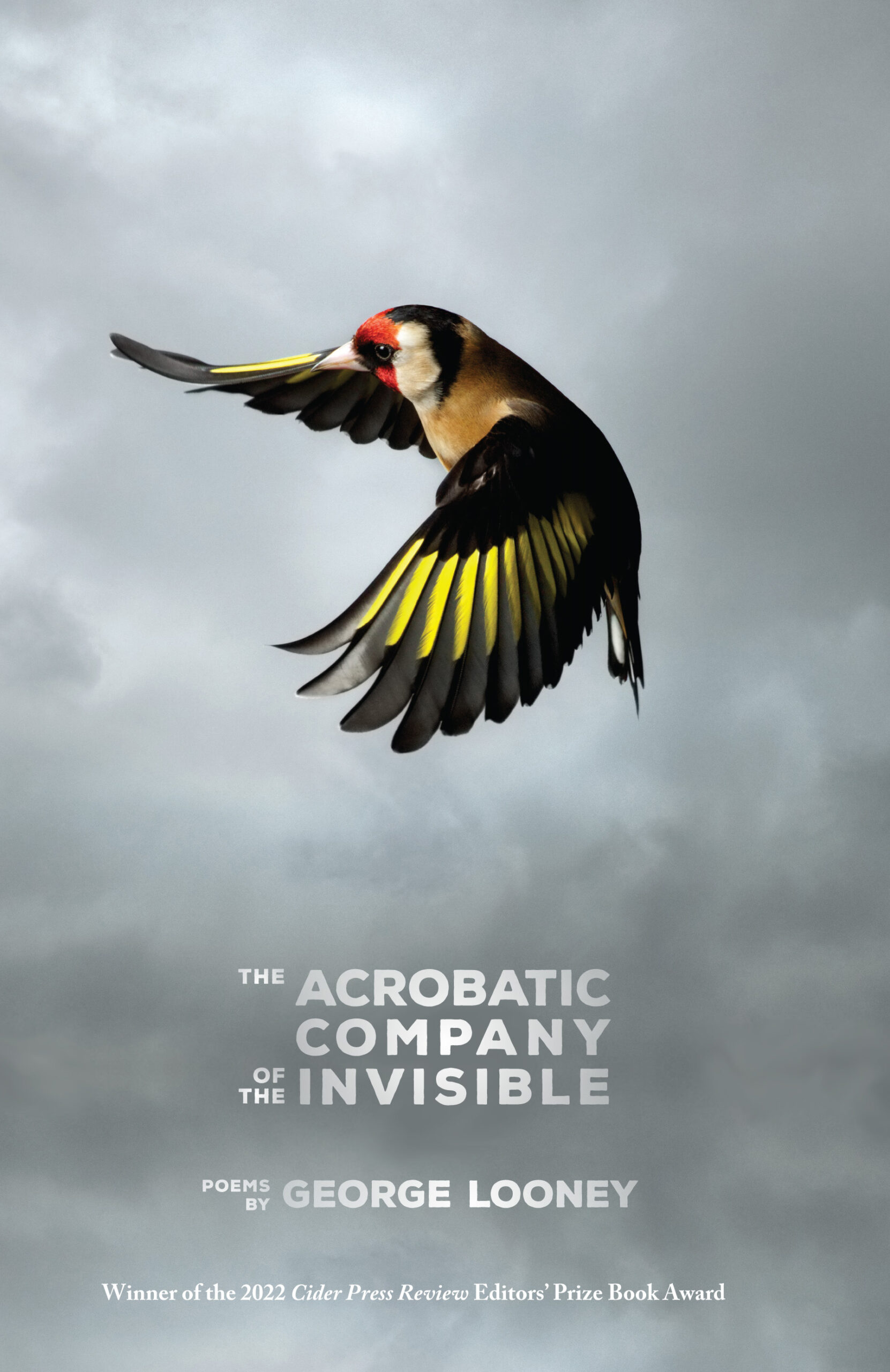Description
ISBN: 9781930781634
Binding: Tradepaper
Pub date: August, 2023
Cover photo by Mark Harvey
Advance praise for The Acrobatic Company of the Invisible:
“If George Looney’s The Acrobatic Company of the Invisible beautifully offers for our consideration a series of meetings, of light and grass, of figures in a photograph, of instants of space and time, it is above all a study of missed connections, of one awake and one asleep, of distances between word and meaning, the present and the absent, a face and a memory. And yet finally, throughout these poems there is music, there are sparrows, a moon that comes and goes, and the grace to counterbalance loss and departure.”
—Nancy Eimers, author of Human Figures
“George Looney has the uncanny ability to make readers smile while leading them through a valley littered with loss and a longing that ‘haunts us more//than the dead do.’ Wryly observing that ‘we keep [the dead] with us, still/and outside time,’ Looney offers music as a source of consolation to both the living and the ghosts living among us: ‘An ibis calls out this morning,/its song something/both the dead and the living love.’ Looney chooses not to succumb to sorrow, and the birds he summons in these achingly beautiful poems become metaphors for faith—‘the faith/that lets sparrows leap into air.’”
—Nancy Naomi Carlson, author of An Infusion of Violets
“In this collection, Looney dances as if no one were watching as he turns longing, sorrow, and loss into prayer. He has a gift for light—‘Everything/bejeweled this morning, as if remembered,’ ‘this woman’s bare shoulder/illumined by a four-in-the-morning moon’ —and an ear for birds—wrens, doves and starlings that sing baroque, and for the way, like them, a trapeze artist leaps into thin air. And if that weren’t enough, he offers us such seemingly effortless phrases as ‘the stink/and nervous ruin of his cigarette,’ and ‘the rush and stuttering of wings.’ Go see the acrobats. You’ll be glad you did.”
—Lola Haskins, author of Asylum: Improvisations on John Clare
This is a book of ghost stories. Not the eyebrow-raising type streamed to our digital screens, but the specters of our pasts, conjured, not with joined hands or Ouija boards, but with that most clever of shape-shifters…memory, which, as the poet rightly observes, “longs for what we didn’t do as often as the done.” There is regret here—for the missed opportunity of an erotic encounter, for things unsaid, for things that can never be unsaid—but there’s also joy to be found in the “blessed varieties of evening birdsong,” and even humor in the awkward admission of a late-night weatherman. In The Acrobatic Company of the Invisible, the exquisite curves of a woman’s hip bones are greater cause for reverie than anything “men make of the world,” and angels “fuck with [the living], pretending to be the dead.” This is Looney at the top of his game!
—Frank Paino, author of Obscura
In these stunning, spiritually powerful poems, George Looney does us readers a favor by becoming the voice inside us all, talking humbly and declaratively through the juxtaposed paradox of the temporal speaking with the ineffable, “when being/straddles non-being like a lover.” These confidential, intimate and witty poems cohere—over and over again—with an inner conversational dialogue that encapsulates physical matter, speaking emphatically with ineffable non-matter—the abstract—in what Looney refers to as the realm of the “invisible.” What results is a verbal exchange between matter in dialogue with spirit, the manifest speaking intently with the ephemeral, in buoyant interplay. For Looney, the “acrobatic company of the invisible” is relational: it’s how memory—remembrance—transcends, through poetic reverie and recapitulation, into integrated experience, which Looney cleverly refers to as “the waltz” that makes “everything possible.” Looney recognizes the human predicament of our temporal existence within time most clearly when he tells us, “the abstract handcuffs the body//to time.” What a stunning line! These poems dwell in the “subtle/hum of the near to invisible.” They deliberately welcome the ineffable into memory—so that memory can “bestow a grace” on “what everything was always about.” Looney goes on to assert that “Memory knows what it wants,/and what it wants is not the past.” These are edifying poems—represented by recurring motifs of sparrows, ghosts, music, the dead, vast sky, lovers, masks, and the ever present moon—that invest themselves with an intent to not only converse within “the acrobatic company of the invisible” but, moreover, to use the opportunity to weave a venerated web—like an artful trapeze artist juggling the particulars of life experience on the wire of time—into wisdom, deep inside the continuum of substance into spirit and back. Looney is artistically preoccupied with the interplay of form and formlessness—how they actually converse—and how the living and the dead, as the crucial weavers of wisdom within recapitulated memory, integrate our physical longing and desire with spiritual bewilderment and wonder, which is the paradox of temporal physical life, juxtaposed with ineffable spiritual existence. Reading this book made me relax inside such a paradoxical stretch. It helped me. It liberated me.
—Ken Meisel, psychotherapist and author of Studies Inside the Consent of a Distance, and Our Common Souls: New & Selected Poems of Detroit
About the Author
George Looney’s books include the recently-released Ode to the Earth in Translation, The Worst May Be Over, which won the Elixir Press Fiction Award, The Itinerate Circus: New and Selected Poems 1995-2020, the Red Mountain Press Poetry Award-winning What Light Becomes: The Turner Variations, and the novel Report from a Place of Burning which was co-winner of The Leapfrog Press Fiction Award. He is the founder of the BFA in Creative Writing Program at Penn State Erie, editor-in-chief of the international literary journal Lake Effect, translation editor of Mid-American Review, and co-founder of the original Chautauqua Writers’ Festival.
from
The Acrobatic Company of the Invisible:
Stories of Blue Herons in Late Winter
The somber itch of crows in a gray sky
in March. A slant of light twitches
and carves the landscape, stark
sparrows punctuating whatever sad,
languid sentences might have been said
with no one listening. This cold morning
even the sparrows seem condescending
under a sky so indifferent. A woman
runs alongside a boy no more than ten.
The kite the boy’s trying to keep aloft
is fashioned in the iconic shape of a blue heron,
a bird the boy’s never seen. He thinks
the kite is the shape of a myth. Let it be
years before he knows how wrong he is.
This bird-kite slants toward the ground,
twitching in an inconstant wind. When it lifts
toward a sky gray enough to bring a man
to tears, the woman laughs and urges her son
to keep on running. Don’t stop, she yells,
and he runs, the kite a hieroglyph come to life.





Reviews
There are no reviews yet.